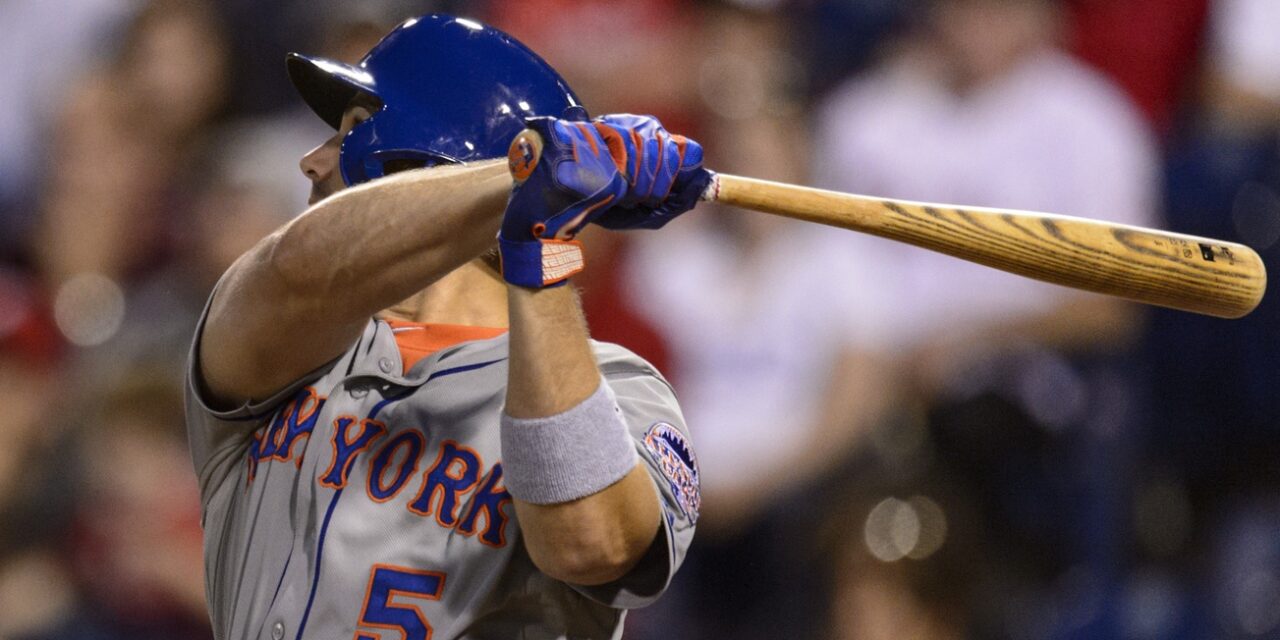The question posed in the title has been a hot topic in the MMO comment thread lately. I decided to take a look at this idea from a little different perspective and compare two players — Mike Trout and David Wright.
I remember the first time I heard about this idea of the best hitter in the lineup batting leadoff. The year was 1988, and I was 10 years old when one of my Little League coaches explained to us how the lineups worked in Japan. He explained that they bat their best hitter (the hitter we would consider a No. 3 hitter in America) in the leadoff spot. We asked him why, since it made zero sense to us. He said it was because they want their best hitter in the lineup getting up the most times in the game.
We were only 10 years old, so that was about as deep as the conversation went. But I always remembered it. I don’t remember where I was exactly, or the people that were with me, but I remember not knowing anything about Japanese baseball and taking it at face value. I never found out if what that coach told us was true, but with the rise of advanced statistics, there is tons of evidence that now backs this up as a feasible option.
It goes against everything we have grown up learning, but the fundamental reasoning behind it makes perfect sense. The leadoff hitter gets the most plate appearances in a game and is only guaranteed to hit leadoff once in a game, so why not have my best hitter there? The more opportunities my best player has to hit, the better the team’s chances of winning — seems simple enough.
I mentioned earlier I was going to compare two hitters — Trout and Wright. Wright has been the Mets No. 3 hitter for the majority of his nine year career. Trout spent most of his time in the two-hole last year, but has been one of the best leadoff hitters (when used in that capacity) in baseball over the past two seasons. The question is why is Trout sometimes used as the leadoff hitter when he puts up numbers that are better than most three-hole hitters? Wouldn’t he be better served in the three-hole? If he were on a different team, would he be the best option to hit third, or would that team have him hit leadoff? And one more question — if Trout can hit leadoff, why not Wright?
Let’s look at some statistics. Here are Trout’s career numbers when he leads off a game and when he leads off an inning:
| I | Split | G | PA | AB | R | H | 2B | HR | RBI | BB | SO | ||||
|---|---|---|---|---|---|---|---|---|---|---|---|---|---|---|---|
| 1st Batter G | 157 | 157 | 143 | 35 | 40 | 9 | 5 | 5 | 10 | 40 | .280 | .344 | .476 | .819 | |
| Leadoff Inn. | 252 | 403 | 355 | 88 | 120 | 25 | 14 | 14 | 44 | 84 | .338 | .417 | .544 | .961 |
When Trout leads off a game his numbers drop way below his career marks. However, when he leads off an inning, all of his statistics are on par with his career numbers. About one-third of his homeruns have come when he led off an inning. The majority of his homeruns have come in the leadoff hole, but oddly enough, his highest OPS comes out of the two-hole.
In fact, one can argue that Trout is a better hitter when he hits second. By the way, Trout has zero career stolen bases after leading off the game or an inning and getting on base.
Now let’s look at Wright’s statistics. Here are Wright’s career numbers when he leads of an inning:
| I | Split | G | PA | AB | R | H | 2B | HR | RBI | BB | SO | ||||
|---|---|---|---|---|---|---|---|---|---|---|---|---|---|---|---|
| Leadoff Inn. | 847 | 1153 | 1033 | 229 | 307 | 64 | 48 | 48 | 114 | 207 | .297 | .370 | .512 | .882 |
When leading off an inning, Wright has hit .297 with a .370 on base percentage. His career OBP is .382, so it’s slightly lower when he leads off an inning. His power numbers also drop off drastically. Could this be because he is being pitched differently when he is leading off an inning? Is it a comfort level? Whatever it is, Wright’s numbers are much better when he hits out of the three-hole.
Is it worth it to get Wright approximately 100 more plate appearances in a season if his production will drop off?
Here’s a brief story about my experience of hitting leadoff. I was finishing up an outstanding freshman year of college where I spent most of the time hitting out of the 3-4-5 hole in the lineup. Going into my sophomore year, the team lacked a leadoff hitter. I volunteered to move out of the middle of the order and hit leadoff — the coach agreed it was a great idea. Unfortunately things didn’t go as smoothly as we planned. I started the season in a 1-for-20 slump, and it wasn’t long before I was moved back to the middle of the lineup.
Obviously, it was all mental for me. Hitting leadoff should have given me more fastballs, and there is nothing I liked more than seeing fastballs. My numbers should have improved hitting leadoff, but they didn’t improve until the coach moved me back to the middle of the lineup.
Oddly enough, when I was looking up Trout’s numbers on BaseballReference.com for this piece, I stumbled onto a post on Peter Gammons’ blog. In this post he covers a sabermetric book entitled The Book: Playing the Percentages in Baseball. This book highlights the optimal lineup and states the best hitters should be in the one, two and four-hole. Wait, what happened to the three-hitter? I’m not sure because I haven’t read the book yet. But here is a brief breakdown of the book from Gammons:
Tom Tango, Mitchel Lichtman, and Andrew Dolphin analyze the data and conclude that the optimal lineup has a team’s three best hitters in the #1, #2, and #4 slots in the batting order. They outline the skill set that determines how these players are positioned. The leadoff hitter should reach base most often and less home run power is preferred. Meanwhile, the #2 hitter should walk more than the #4 hitter, who ideally has the most extra-base hits.
The number two batter comes to the plate more frequently than any batter other than the leadoff batter, often with the bases empty, so think of him as having the characteristics of a second number one in the lineup.
Again, the logic behind having your best hitters hitting as high in the order to get them more plate appearances is sound. Unfortunately, this is looking at it based on their performance of where they currently hit in the lineup. A large chunk of baseball, and hitting especially, is mental.
The stats won’t reflect the change that can happen to a hitter similar to what happened to me when I was moved to the leadoff spot. There is just no telling what can happen when a player is taken out of their comfort zone. There is a better chance that a player who is considered your best hitter hits just as good out of the leadoff spot, but there is also a chance it turns out to be the worst decision you ever made.
Long story short, you cannot assume your best hitter will still be your best hitter if you start putting them into positions they are not comfortable in.
















